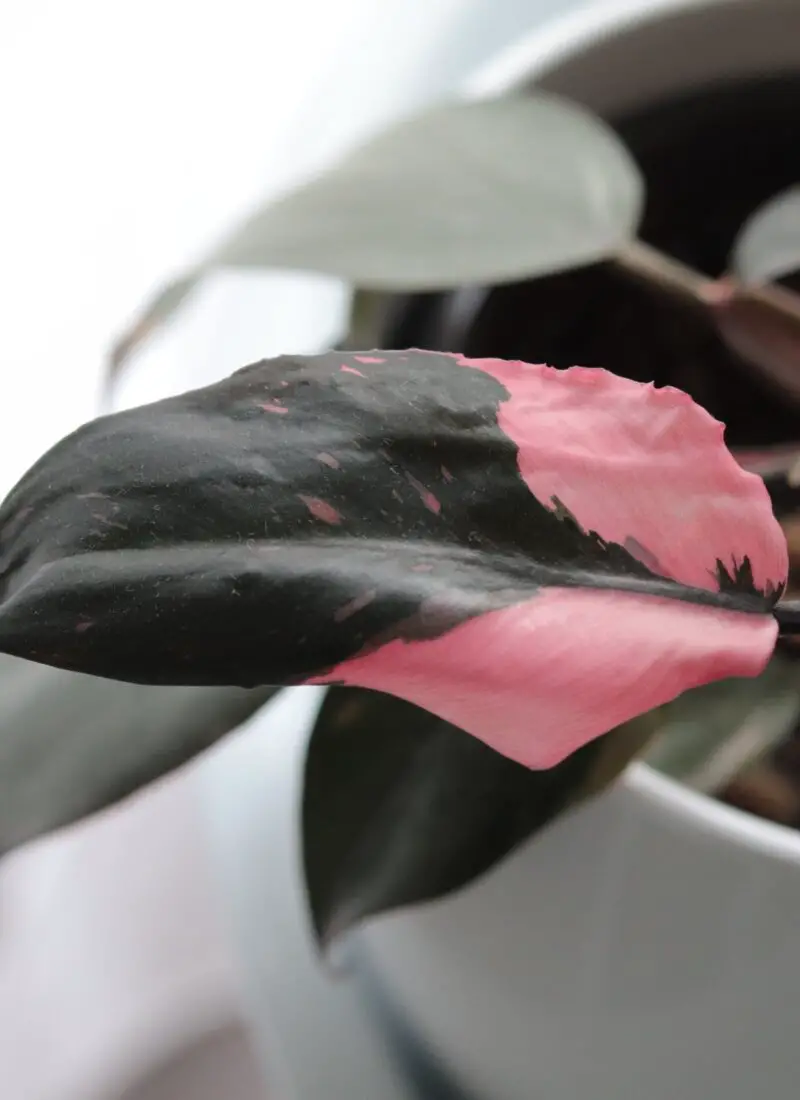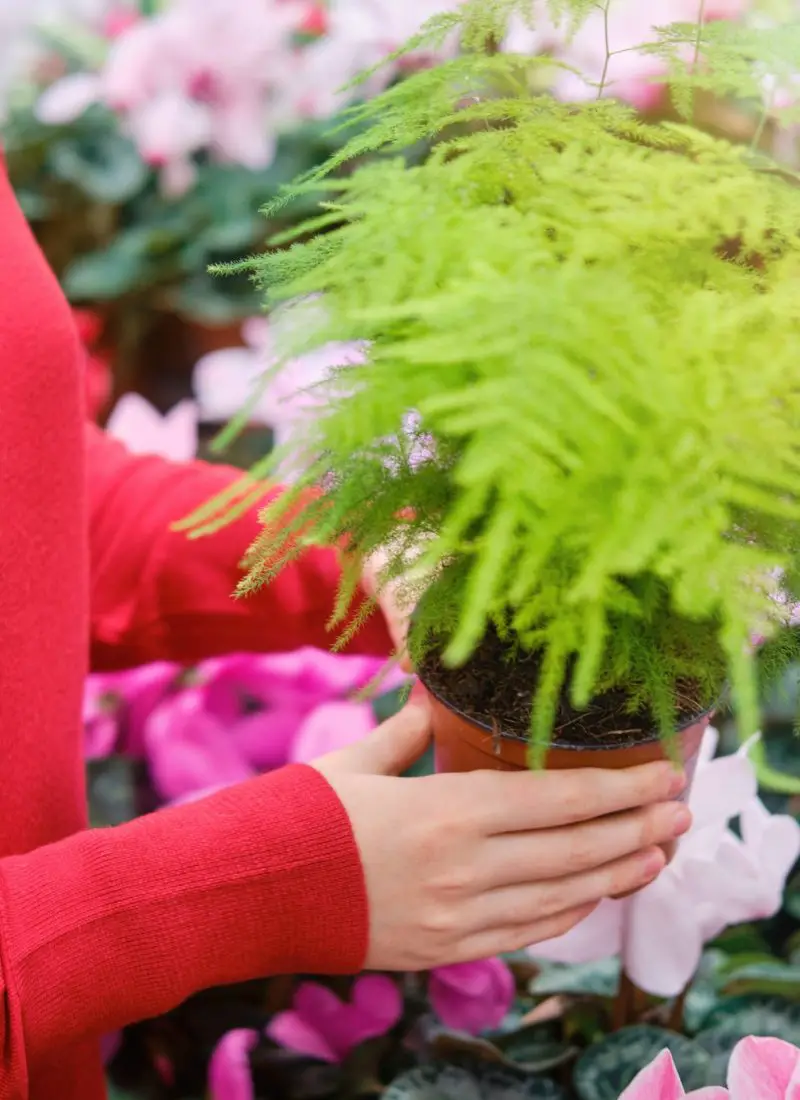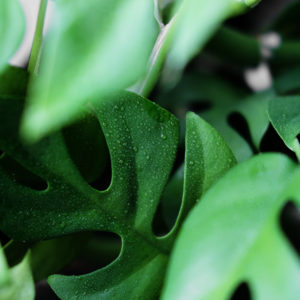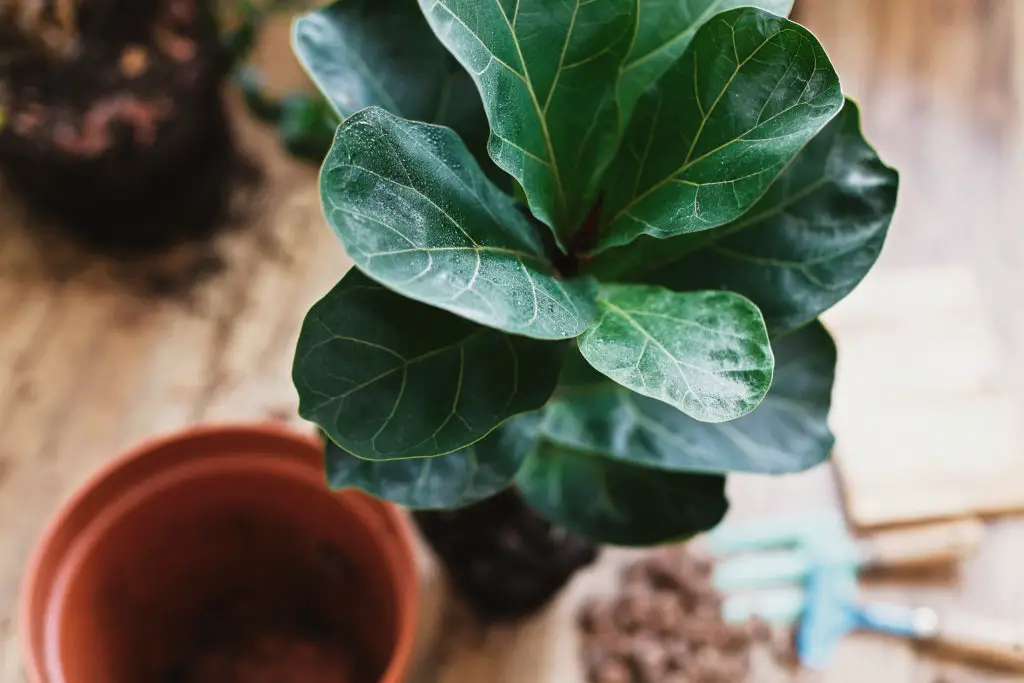
Indoor fiddle leaf fig trees can grow crazy tall until it’s scraping your ceiling. For some, this is a great look. For others, it’s just plain annoying and troublesome. But what would happen if you just cut the top bit off so it’s more manageable to care for?
As a whole, new lateral branches and leaves will develop when top pruning a fiddle leaf fig. The tree redirects its growth hormones to nearby nodes and starts producing buds. This branching method creates a more bushy look and is helpful to ensure even growth for lopsided fiddle leaf figs.
Two last things before we dive in:
- If your fiddle leaf fig is looking leggy and thin cutting the top off can help, if you want to know how to prune your fiddle leaf fig to make it look bushier check out our article: Why Do Fiddle Leaf Figs Get Leggy? & How to Fix It.
- Anddddd… If you are going to trim your fiddle leaf fig, you may as well check out our propagation article and get some baby fiddle leaf figs from the trimmings: Check our link article here. you can propagate with stem cuttings, healthy leaf cuttings, and air-layering. All of these are covered in our ultimate guide on propagation.
Below, I elaborate more on this technique, an alternative method, and some helpful tips:
(As an Amazon Associate, I earn from qualifying purchases.)
Table of contents
What Happens When You Prune a Fiddle Leaf Fig?
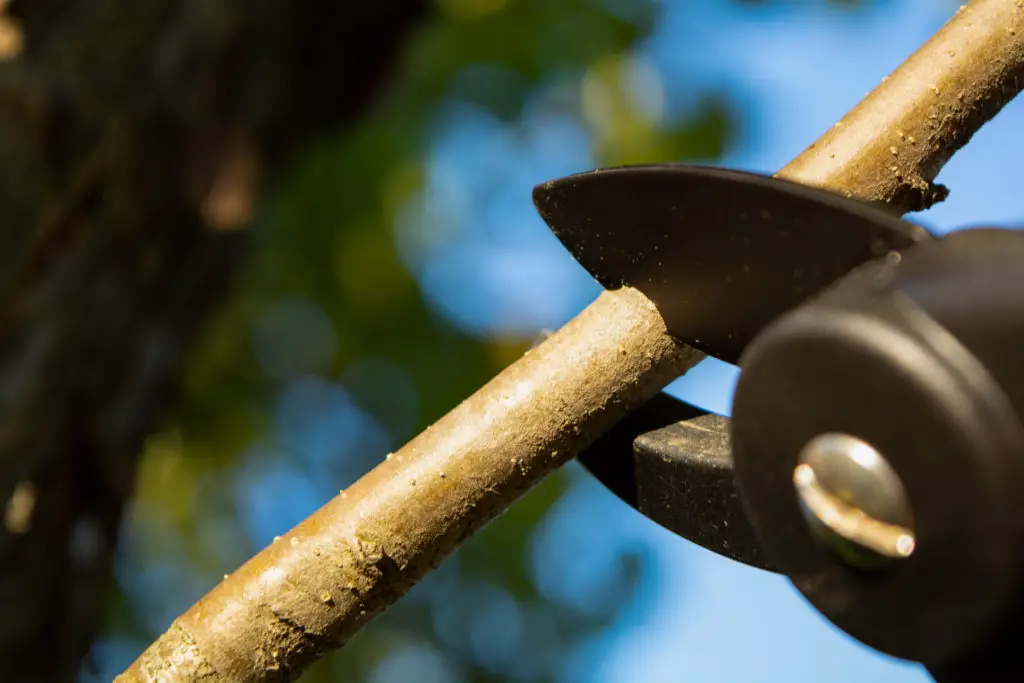
When a fiddle leaf fig tree grows, it shoots straight up and not much to the sides with branches. They developed this way to get as much sunlight as possible for photosynthesis. If they’re not getting enough light, they will become stretched and leggy, trying to gain more sun.
Without getting too deep into plant science, one of the factors influencing this vertical development is called auxin, the growth hormone in a fiddle leaf fig. It stops growth in the lower part of the stem to focus more on developing the main stem. This is why you’ll often see more leaves and not branches.
When you cut off a stem or leaf, this disrupts the flow of auxins. They will shift to the nearest nodes and stimulate new growth there. ‘Nodes’ refers to the slight swell in the stem from which buds, branches, and leaves develop. A few weeks or months later, you’ll see noticeable black buds form near the pruned sections, which will grow into side shoots and leaves.
Can I trim my Fiddle Leaf Fig’s stem?
As a general rule, pruning fiddle leaf figs are safe for the plant. It’s ideal for encouraging new lateral growth, managing height, and promoting adequate airflow around the plant. However, be careful to wear protective clothing and wipe off milky sap from the pruned parts to prevent irritation and accidental ingestion.
How to Encourage Branching Out in a Fiddle Leaf Fig?

1. Pruning
This method is the easiest and most guaranteed way to get some branching from your fiddle leaf fig. However, it does take careful planning and a bit of trial and error to get the specific branching you want.
For example:
- Cutting the top of the fiddle leaf fig will keep it short and encourage side branches to grow, creating a more compact look.
- Pruning it heavily on one side helps give a balanced look if the fiddle leaf fig is lopsided.
2. Notching
This is a more advanced technique and may not always produce branches. Still, some have reported success in doing it. It involves slicing halfway deep into the stem diagonally, leaving an open wound above a node. After the wound calluses over, buds will grow on the nearest node, growing into branches and leaves. It typically involves handling and maneuvering a crafting knife, but otherwise, a sharp pruner works.
Lastly, there’s one more branching method people often mention: pinching off the small shoot at the top of the fiddle leaf fig. However, this is not as effective as they think it is. You’ll likely get leaves growing on the nearest nodes but not lateral branches.
Whichever the case, this is up to your preference. Just make sure you don’t prune or notch your fiddle leaf fig too severely, or it will have trouble recovering with too many cuts.
Will a Fiddle Leaf Fig regrow leaves again?
As a whole, leaves will regrow on a fiddle leaf fig, provided there are nodes on the stem. If there are none, it is unlikely to grow anything at all. This is why it’s vital to ensure any stem cutting has at least 2-3 nodes to propagate the plant.
Helpful Tips When Pruning a Fiddle Leaf Fig
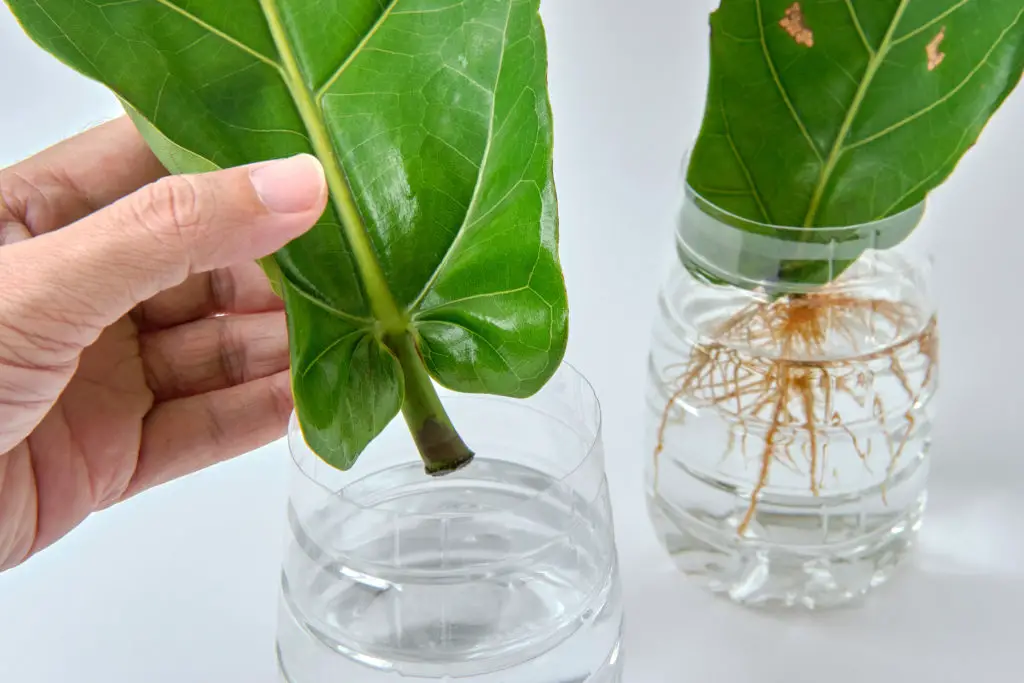
Here are a few tips to help you prune your fiddle leaf fig with no problem:
- Use sharp and sterilized cutting tools for pruning. This will create clean cuts with no chance of pathogens transferring into the open wound from contaminated tools. You can find the instructions on sterilizing your cutting tools in this article here.
- Prune your fiddle leaf fig in spring or summer when it is actively growing. This stimulates faster recovery and growth for the plant in general, as opposed to in fall or winter.
- Prune only ⅓ of the fiddle leaf fig’s total branches and leaves. It’s always better to under-prune than over-prune the plant. Otherwise, it won’t recover properly and will likely grow unevenly.
- Prune woody portions of the fiddle leaf fig. If the stem is still green and smooth, don’t cut them as they are still growing. And do not remove the remaining leaves after pruning the fiddle leaf fig. The plant still needs them for photosynthesis as it develops new buds.
- Mark the spots you want to prune your fiddle leaf fig with post-it notes or sticky markers. It helps give you an idea of how you want to shape the branches without accidentally cutting off parts of the plant.
- Lay down newspapers or plastic at the tree’s base to prevent staining from the milky sap. It also makes for an overall easier clean-up. It’s also advisable to wear protective clothing such as gloves and long sleeves to avoid contact with the milky sap. It’s an irritant and may even be hard to wash off.
- Wipe away any milky sap from the pruned sections of the fiddle leaf fig with a damp cloth. This is to prevent curious pets or children from licking the substance, which is toxic upon ingestion.
- Propagate cut stems instead of discarding them. You can place them in water for about a month. Once the roots are 3 inches long, plant the stem in the soil for further growth. Here’s a link to our Ultimate Guide on How to Propagate Houseplants, you can propagate with stem cuttings, healthy leaf cuttings, and air-layering. All of these are covered in our ultimate guide on propagation.
- Ensure the fiddle leaf fig gets the best care after pruning. Give the plant plenty of indirect sunlight, biweekly watering in well-draining soil, and a warm area with high humidity. Hold off on fertilizing for a bit until the buds appear.
Final Words
And there you have it! Don’t worry too much about your fiddle leaf fig regrowing if you decide to cut the top off. As long as plenty of nodes are left to regrow its leaves and new branches, it’ll bounce back. Happy planting!
References:
https://ucanr.edu/blogs/blogcore/postdetail.cfm?postnum=46029
https://plants.ces.ncsu.edu/plants/ficus-lyrata/
https://edis.ifas.ufl.edu/publication/ST254
https://libguides.nybg.org/fiddleleaffig


